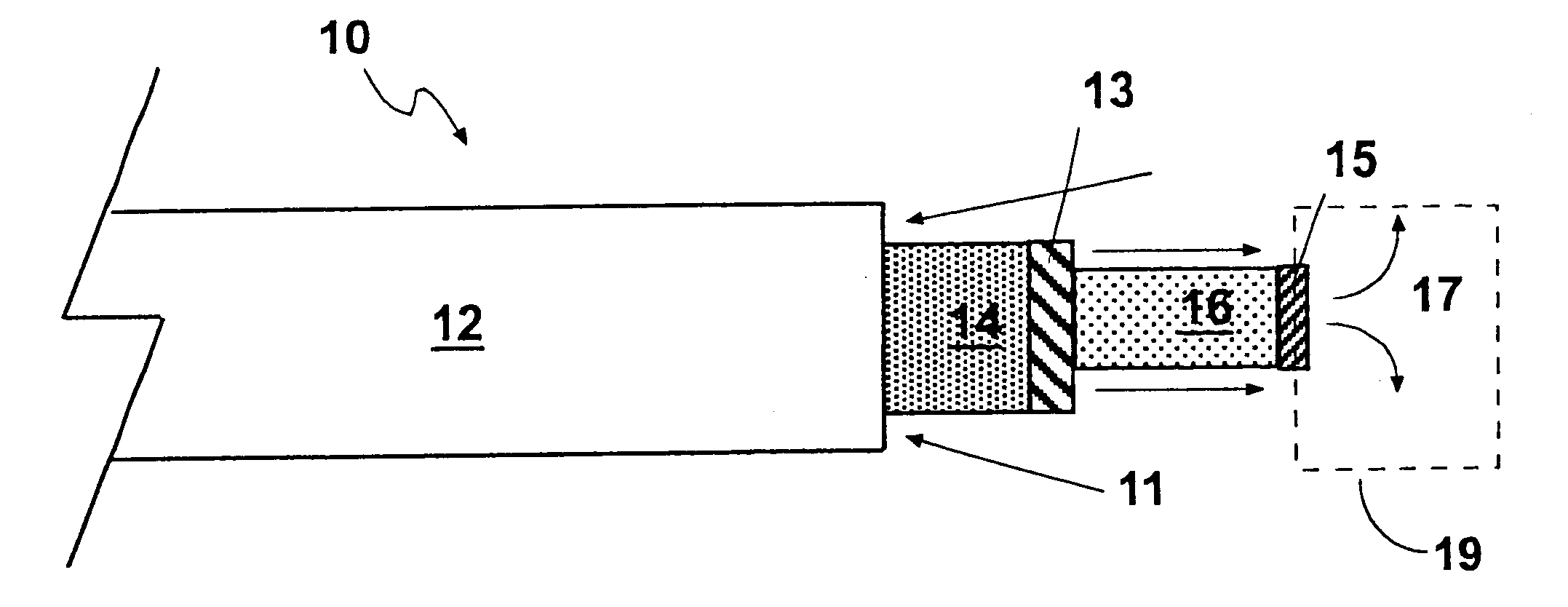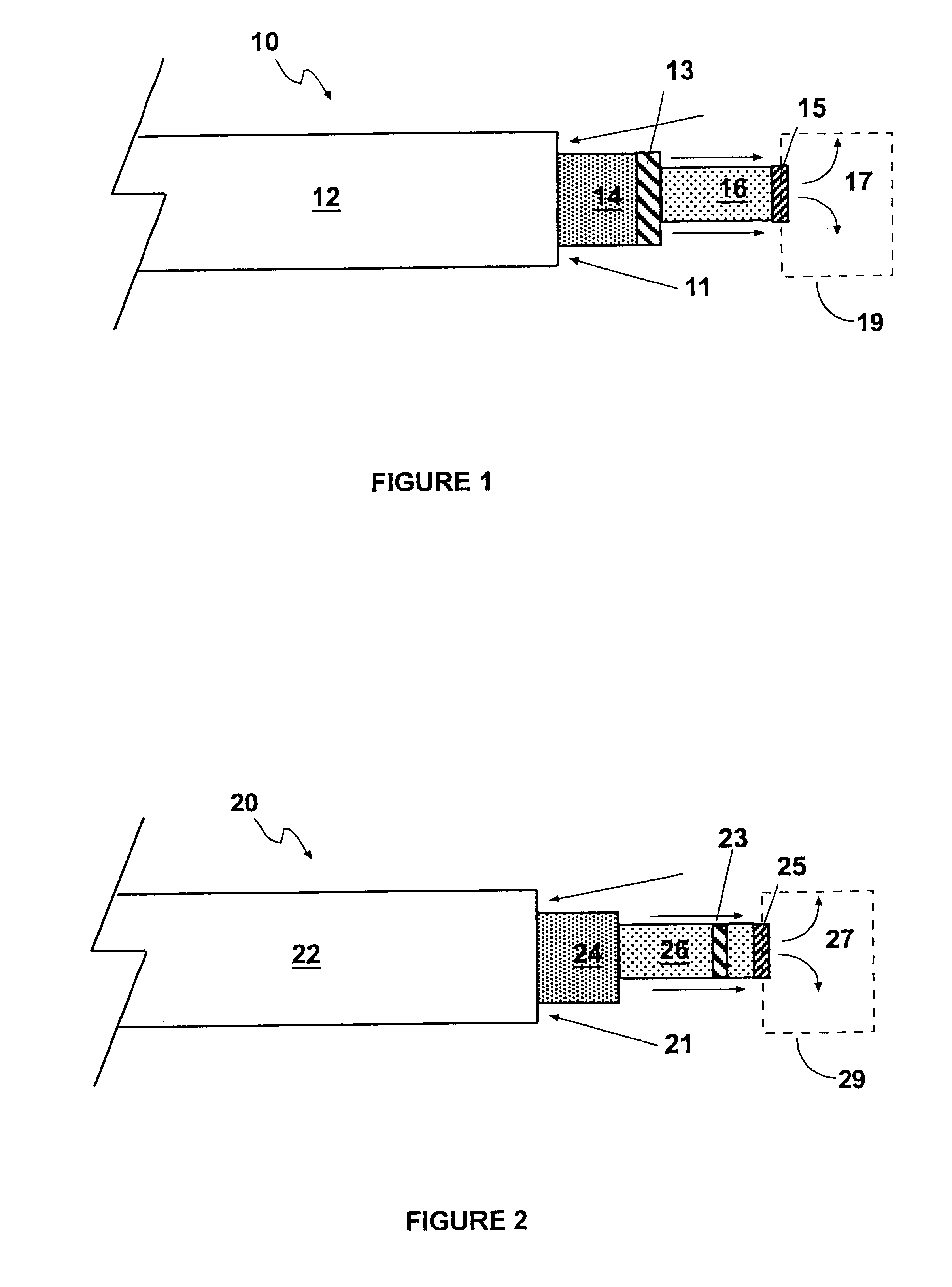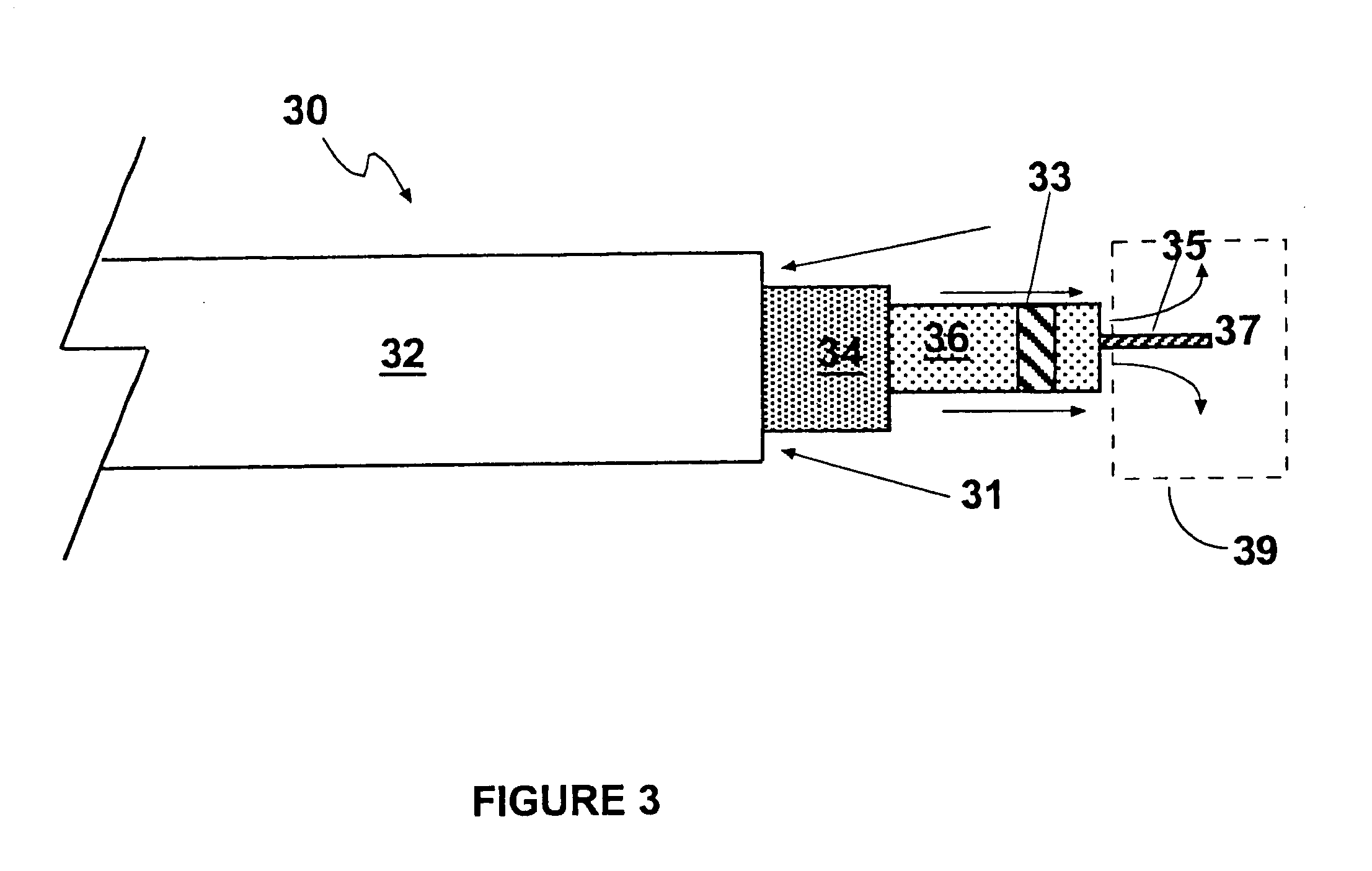Proton generating catheters and methods for their use in enhancing fluid flow through a vascular site occupied by a calcified vascular occlusion
a calcified vascular occlusion and proton generation technology, applied in the field of vascular disease, can solve the problems of calcified vascular occlusions, invasiveness, tissue damage, and significant challenges to current treatment methodologies, and achieve the effects of improving the quality of life and reducing the risk of occlusions
- Summary
- Abstract
- Description
- Claims
- Application Information
AI Technical Summary
Benefits of technology
Problems solved by technology
Method used
Image
Examples
first embodiment
Turning now to the figures, FIG. 1 provides a depiction of the distal tip of a catheter device according to the subject invention. Distal end 10 of the catheter device has two electrodes, the anode 15 and the cathode 13. Anode 15 and cathode 13 are ring electrodes at the end of tubular elements 16 and 14, respectively, which tubular elements are, in turn, slidably positioned inside of outer tubular element 12. As such, tubular elements 12, 14 and 16 are coaxial and make up the catheter device. During use, fluid is introduced into the vascular space through the opening at the distal end of element 16 in the direction 17 and is removed from the vascular space via the annular opening 11 in the direction of the arrows. The zone 19 indicates the area of reduced pH that is produced during use.
second embodiment
FIG. 2 provides a depiction of the distal tip of a catheter device according to the subject invention. Distal end 20 of the catheter device has two electrodes, the anode 25 and the cathode 23. Anode 25 and cathode 23 are ring electrodes positioned at the end of the same tubular element 26, which tubular element is, in turn, slidably positioned inside of outer tubular elements 24 and 22. As such, tubular elements 22, 24 and 26 are coaxial and make up the catheter device. During use, fluid is introduced into the vascular space through the opening at the distal end of element 26 in the direction 27 and is removed from the vascular space via the annular opening 21 in the direction of the arrows. The zone 29 indicates the area of reduced pH that is produced during use.
third embodiment
FIG. 3 provides a depiction of the distal tip of a catheter device according to the subject invention. Distal end 30 of the catheter device has two electrodes, the anode 35 and the cathode 33. In this embodiment, the anode 35 is a wire electrode and cathode 33 is a ring electrode positioned at the end of the tubular element 36, which tubular element is, in turn, slidably positioned inside of outer tubular elements 34 and 32. As such, tubular elements 32, 34 and 36 are coaxial and make up the catheter device. During use, fluid is introduced into the vascular space through the opening at the distal end of element 36 in the direction 37 and is removed from the vascular space via the annular opening 31 in the direction of the arrows. The zone 39 indicates the area of reduced pH that is produced during use.
The above described specific embodiments are merely representative embodiments of the subject catheter devices. Other configurations are possible and are intended to come within the sc...
PUM
 Login to View More
Login to View More Abstract
Description
Claims
Application Information
 Login to View More
Login to View More - R&D
- Intellectual Property
- Life Sciences
- Materials
- Tech Scout
- Unparalleled Data Quality
- Higher Quality Content
- 60% Fewer Hallucinations
Browse by: Latest US Patents, China's latest patents, Technical Efficacy Thesaurus, Application Domain, Technology Topic, Popular Technical Reports.
© 2025 PatSnap. All rights reserved.Legal|Privacy policy|Modern Slavery Act Transparency Statement|Sitemap|About US| Contact US: help@patsnap.com



